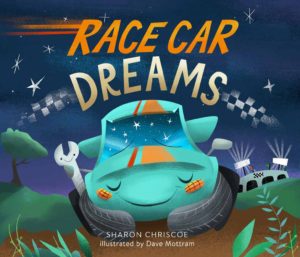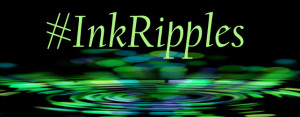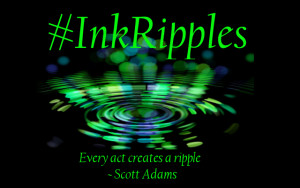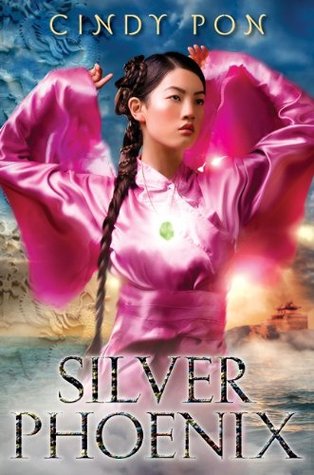I’m very excited for today’s guest on the Observation Desk is the author of the picture book RACE CAR DREAMS. The boys got this one for Christmas and love it! Sharon is doing a one-day Amazon giveaway on Wednesday, so make sure to check out my Twitter (@katielcarroll) or author Facebook page on Wednesday for details on that. Welcome, Sharon!
Timeless with a Twist
by Sharon Chriscoe
Thanks for having me, Katie! When I think about my favorite children’s books, one simple word comes to mind:
Timeless.
A book that will not only hold up to reading after reading, but also generation after generation. A book that can be a treasured gift passed down through a family line or holds special memories of days gone by.
 Some of my all-time favorite children’s books are: The Velveteen Rabbit, The Little Engine That Could, Corduroy, Little Bear (series) and Goodnight Moon. Each of these books has one special quality in common. They are timeless. No matter if they were read in the 1920’s or in 2017, their message is still important and needs to be shared, and loved.
Some of my all-time favorite children’s books are: The Velveteen Rabbit, The Little Engine That Could, Corduroy, Little Bear (series) and Goodnight Moon. Each of these books has one special quality in common. They are timeless. No matter if they were read in the 1920’s or in 2017, their message is still important and needs to be shared, and loved.
Today’s market is in some ways very much the same as it has always been. Classics are still as popular as ever. Children or animals are the most common main characters. And friendship, love, perseverance, and bedtime routines are always hot topics.
However, like most other things, books are evolving. One example of how children’s books are evolving is when an author adds a twist to the story. By adding twists to their book, the author brings something fresh and new to their story and in return making it a timeless treasure that will enlighten children for decades.
Children’s book twists can take place in a classic plot, such as Mary Had A Little Glam by Tammi Sauer, or Goldilocks and The Three Dinosaurs by Mo Willems, in where both authors use a familiar fairy tale but change the plot, setting, or point of view. These books are called fractured fairy tales.
Other examples of a twist can be by portraying unusual characters, such as Lady Pancake and Sir French Toast by Josh Funk, where the main characters are yes . . . just as the title suggests, a lady pancake and a sir French toast. Or The Day The Crayons Quit by Drew Daywalt, a story told from the point of view of a box of crayons.
Theme is also an effective way to add a twist to your book. In Be A Friend by Salina Yoon, the theme is friendship and acceptance. But the twist is that Salina uses a mime to tell her story. Dennis, her main character, never speaks a word, yet the ‘reader’ hears every one.
Another example of a twist can be seen in my picture book, Race Car Dreams. The twist combines both an unusual character and its theme, where a little race car does the same bedtime rituals as a child. This enables children to see themselves in the book’s little Race Car as he prepares to settle in for a good night’s sleep. By imagining that race cars also wind down their engines with a bath, a good story, and a full tummy, children are both soothed and entertained, and drift happily off to dreamland.
So, the next time you’re looking for a new picture book idea, let your mind wander and see where the twists take you–and you might find yourself writing a timeless book of your own!
RACE CAR DREAMS blurb:
After a day at the track of zipping and zooming, a race car is tired and ready for bed. He washes his rims, fills his tummy with oil, and chooses a book that is all about speed. All toasty and warm, he drifts off to sleep, he shifts into gear . . . and dreams of the race!
Find RACE CAR DREAMS at Amazon and Barnes & Noble.
About the Author:
 Sharon Chriscoe may not vroom around a race track, but she does zip and zoom around in a bread truck with her husband, Ricky. Fueled with fresh bread, snacks, and writing tools, Sharon has made this her mobile office! She and her husband live in Pilot Mountain, North Carolina. They have three children and one grandchild, as well as an assortment of dogs, cats, bunnies and occasionally a groundhog. In addition to RACE CAR DREAMS, she is the author of BULLDOZER DREAMS (Running Press Kids, 2017) and FIRE TRUCK DREAMS (Running Press Kids, 2018), and THE SPARROW AND THE TREES (Arbordale Publishing, 2015). She is also a contributor to several magazines such as Highlights High Five, Highlights Hello, and The Old Farmer’s Almanac for Kids. She is a member of The Society of Children’s Book Writers and Illustrators and is a graduate of The Institute of Children’s Literature. She is represented by Jessica Sinsheimer of the Sarah Jane Freymann Literary Agency. To learn more about Sharon, her books, and future events, visit her website: www.sharonchriscoebooks.com.
Sharon Chriscoe may not vroom around a race track, but she does zip and zoom around in a bread truck with her husband, Ricky. Fueled with fresh bread, snacks, and writing tools, Sharon has made this her mobile office! She and her husband live in Pilot Mountain, North Carolina. They have three children and one grandchild, as well as an assortment of dogs, cats, bunnies and occasionally a groundhog. In addition to RACE CAR DREAMS, she is the author of BULLDOZER DREAMS (Running Press Kids, 2017) and FIRE TRUCK DREAMS (Running Press Kids, 2018), and THE SPARROW AND THE TREES (Arbordale Publishing, 2015). She is also a contributor to several magazines such as Highlights High Five, Highlights Hello, and The Old Farmer’s Almanac for Kids. She is a member of The Society of Children’s Book Writers and Illustrators and is a graduate of The Institute of Children’s Literature. She is represented by Jessica Sinsheimer of the Sarah Jane Freymann Literary Agency. To learn more about Sharon, her books, and future events, visit her website: www.sharonchriscoebooks.com.




 The hardcover of Cindy Pon’s YA fantasy SILVER PHOENIX immediately grabbed my attention the first time I saw it. The colors are bold and gorgeous (something about the combo of the pink and blue hit all the right aesthetics for me), and the yellow/gold color in the background makes it looks like the cover is glowing. I get a strong sense of character from the cover model and hints of the fantasy world I’m about to delve into.
The hardcover of Cindy Pon’s YA fantasy SILVER PHOENIX immediately grabbed my attention the first time I saw it. The colors are bold and gorgeous (something about the combo of the pink and blue hit all the right aesthetics for me), and the yellow/gold color in the background makes it looks like the cover is glowing. I get a strong sense of character from the cover model and hints of the fantasy world I’m about to delve into. Another favorite YA fantasy cover is Melina Marchetta’s FROI OF THE EXILES. The colors are subtle, but, again, the use of color to convey light is so effective in catching my eye. The somber expression of the cover model and the sword hilt in layered in front of his face give it a dangerous feel, and the mountains at the bottom provide a sense of mystery. Looking at these two first examples, I’m noticing they both have clouds and a sunset (sunrise?) in them. Not sure what to make of that similarity, but felt worth pointing out.
Another favorite YA fantasy cover is Melina Marchetta’s FROI OF THE EXILES. The colors are subtle, but, again, the use of color to convey light is so effective in catching my eye. The somber expression of the cover model and the sword hilt in layered in front of his face give it a dangerous feel, and the mountains at the bottom provide a sense of mystery. Looking at these two first examples, I’m noticing they both have clouds and a sunset (sunrise?) in them. Not sure what to make of that similarity, but felt worth pointing out. I have the Harry Potter books in the British and U.S. versions, but for me, nothing tops the covers of the U.S. hardcover editions. The illustrations of Mary GrandPré are superb. It’s hard to pick a favorite (maybe Half-Blood Prince), but the first book serves as a beautiful example of a magical middle grade cover. The movement of Harry, the sense of wonder every detail evokes, the magical elements to it, the iconic font of Harry’s name…I could go on, but let’s just say these covers are among my all-time favorites.
I have the Harry Potter books in the British and U.S. versions, but for me, nothing tops the covers of the U.S. hardcover editions. The illustrations of Mary GrandPré are superb. It’s hard to pick a favorite (maybe Half-Blood Prince), but the first book serves as a beautiful example of a magical middle grade cover. The movement of Harry, the sense of wonder every detail evokes, the magical elements to it, the iconic font of Harry’s name…I could go on, but let’s just say these covers are among my all-time favorites. So many of my favorite covers are fantasy ones, but I wanted to include something more contemporary. Nova Ren Suma’s IMAGINARY GIRLS has fantastical elements to it but is also deeply rooted in a more contemporary world. The calmness of the girl underwater creates so much drama and intrigue. Is she drowning? If she is, why is she so calm? And again, it comes back to color. The tranquil blue juxtaposed by the pop of red ribbon, and the utter paleness of the girl. Well, this cover totally made me want to read the book!
So many of my favorite covers are fantasy ones, but I wanted to include something more contemporary. Nova Ren Suma’s IMAGINARY GIRLS has fantastical elements to it but is also deeply rooted in a more contemporary world. The calmness of the girl underwater creates so much drama and intrigue. Is she drowning? If she is, why is she so calm? And again, it comes back to color. The tranquil blue juxtaposed by the pop of red ribbon, and the utter paleness of the girl. Well, this cover totally made me want to read the book!























